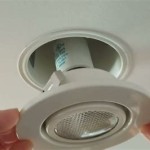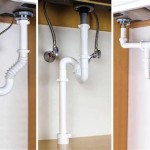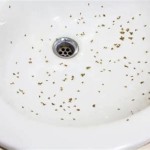Caulking Under the Bathroom Sink: A Guide to Preventing Leaks and Mold
The bathroom is a high-humidity environment, and as such, it's prone to leaks and mold growth. One common culprit: poorly sealed areas, particularly under the bathroom sink. Caulking under the bathroom sink is an essential step in protecting your home from water damage and maintaining a healthy environment. This article will provide a comprehensive guide to caulking under the bathroom sink, outlining key steps, necessary materials, and best practices.
Why Caulking Under the Bathroom Sink is Crucial
Here are the primary reasons why caulking under the bathroom sink is paramount:
- Prevention of leaks: Water splashes and spills are inevitable in a bathroom. Effective caulking under the sink creates a seal that prevents water from seeping behind the sink or into the cabinet below, minimizing the risk of leaks and water damage.
- Mold control: Moisture trapped in poorly sealed areas creates a breeding ground for mold, which poses serious health risks. Proper caulking removes these damp spots, inhibiting mold growth and maintaining a healthy environment.
- Structural integrity: Leaks under the sink can weaken the surrounding structure, leading to damage to the cabinet, floor, and even the walls. Caulking helps preserve the structural integrity of your bathroom.
Steps for Caulking Under the Bathroom Sink
Follow these steps for a successful and effective caulking job under the bathroom sink:
1. Preparation
Before you begin, ensure you have the necessary tools and materials:
- Caulk gun: A standard caulk gun is required to dispense the caulk effectively.
- Caulking knife: A sharp utility knife, specifically designed for caulk, is essential for smoothing and shaping the caulk.
- Caulking compound: Choose a high-quality silicone-based caulk specifically designed for bathrooms to provide an effective water-resistant seal.
- Cleaning solution: A mild cleaning solution, such as white vinegar or a commercial bathroom cleaner, is necessary to clean the surfaces before applying caulk.
- Rag or paper towels: Use these to clean up excess caulk.
- Masking tape: Optional but helpful for creating clean lines and protecting surrounding surfaces.
2. Cleaning and Drying
Clean the area thoroughly with a mild cleaning solution to remove dirt, grease, and any existing caulk. Allow the area to dry completely before proceeding.
3. Applying the Caulk
Follow these steps carefully:
- Cut the tip of the caulk tube: Cut a small opening at the tip of the caulk tube, ensuring it's slightly larger than the desired bead width.
- Apply the caulk: Place the caulk tube into the caulk gun and apply a continuous bead of caulk along the area you intend to seal. Apply the caulk in smooth, even strokes, maintaining a consistent bead width.
- Smooth the bead: Run your finger or a caulking knife along the bead, smoothing the caulk and removing excess product. Use the tool to create a smooth, even finish that blends seamlessly with the surrounding surfaces.
- Clean up excess: Immediately clean up any excess caulk with a damp rag or paper towel before it dries.
- Allow the caulk to cure: Read the manufacturer's instructions for specific drying times but allow the caulk to cure completely before using the sink or applying any pressure to the sealed area.
Additional Tips for Successful Caulking
Here are a few additional tips for a successful caulking job:
- Use a good quality caulk: Choosing a high-quality, silicone-based caulk specifically designed for bathrooms ensures a lasting, water-resistant seal.
- Apply the caulk in a thin bead: A thin layer of caulk provides a more effective seal than a thick bead, which is more likely to crack.
- Smooth the caulk with a damp finger: This creates a smooth, even finish and helps remove excess caulk.
- Clean the area thoroughly before and after applying the caulk: This helps prevent dirt and debris from contaminating the caulk and reduces the risk of mold growth.
- Check the caulk regularly: Inspect the caulking periodically for cracks or gaps and re-apply the caulk as needed to maintain a watertight seal.
By following these steps and tips, you can effectively caulk under your bathroom sink, preventing leaks and mold growth while ensuring a healthy and safe environment for your home.
How To Re Caulk A Bathroom Sink Ifixit Repair Guide
How To Re Caulk A Bathroom Sink Ifixit Repair Guide

How To Clean Remove Reapply Caulk In Kitchens And Bathrooms

Mold In Bathroom Sink Caulking Diy Home Improvement Remodeling Repair Forum

How To Caulk Like A Professional The Home Depot
How To Re Caulk A Bathroom Sink Ifixit Repair Guide

How To Replace Caulk Around Your Bathroom Sink In A Few Minutes

File Caulking Underneath Bathroom Sink Jpg Wikipedia

Ge Sealants How To Install A Drop Sink

Project Bathroom Caulking The Sweetest Digs
Related Posts







